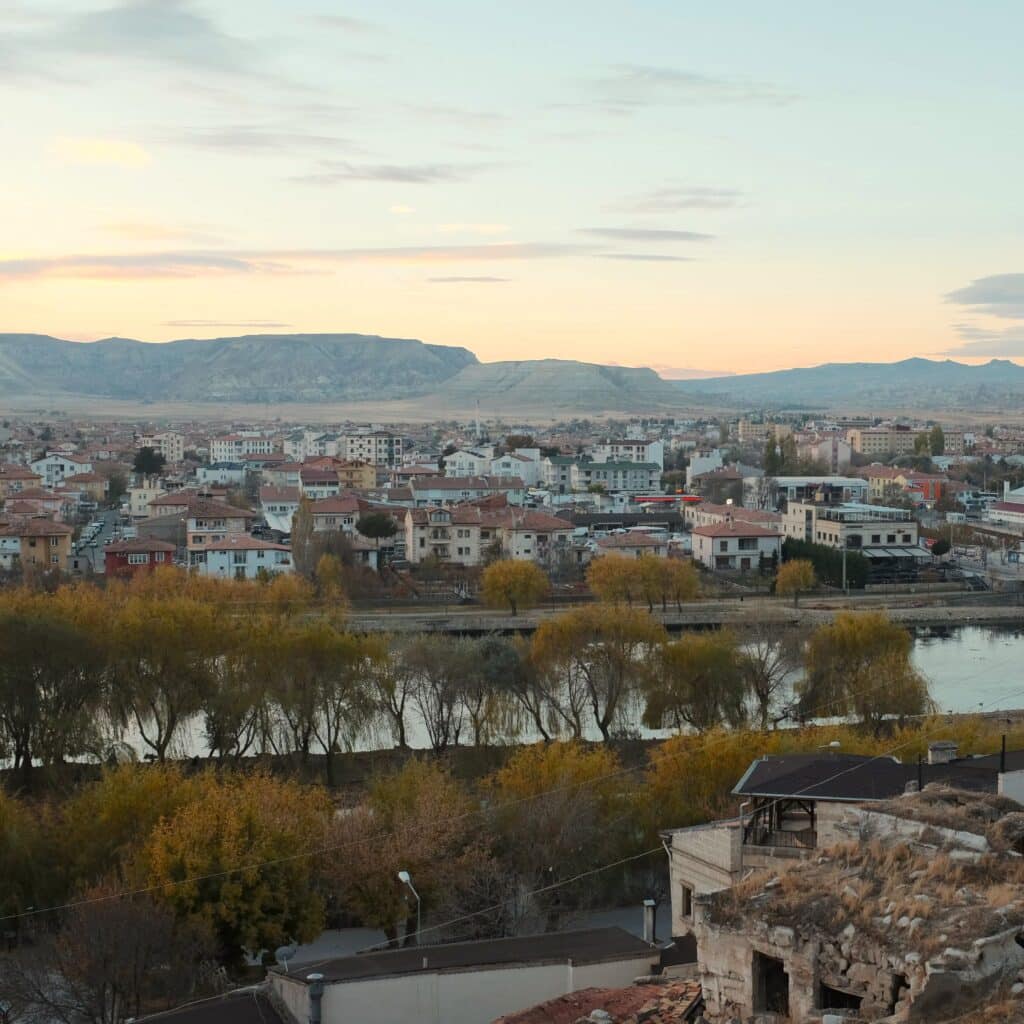🇺🇸 EN
🇹🇷 TR
🇺🇸 EN
The history of Avanos, located in Cappadocia, the center of Anatolia, dates back to the Hittite Period. Its name was Venessa in ancient times. The name of Avanos, which was established on the edge of the Kızılırmak with a length of 1,355 km, comes from “Evani-öz, Even-öz”, which means the pottery town used in the Seljuk Period.
Avanos is famous for its pottery. The soft and oily structure of the soil taken from Avanos Mountains and Kızılırmak beds is suitable for shaping. For this reason, pottery making has survived from the Hittites to the present day and has become a tradition.
It is known that Turkey’s best quality grapes are grown in Avanos, Nevşehir. Volcanic tuffs around the region have made the soil very suitable for vineyards. Wines made from these grapes are also identified with the region. The goodness of the grapes grown here is also associated with the use of pigeon manure. However, it is not used much today because it is not applied in a balanced way because it burns the soil and the crop.
Zelve Valley and Pasabag or Monks Valley near Avanos can be visited to understand both the history and the geographical structure of the region.
19th century to emphasize the history of pottery in Avanos. Aşık Seyrani, one of the Turkish folk poets, wrote the following lines: “Blind people also know the way to Avanos, it is clear from the broken glass of the jug.” The jugs and pots carried by the caravans are spilled and broken on the roads. The shards weave the paths, so that these broken pots and pans take on another task and serve as a guide. In this way, even a blind person finds the way to Avanos without getting lost.
🇹🇷 TR
Avanos: Kızılırmak Kenarında Bir Şarap ve Çömlek Kenti
Anadolu’nun merkezi Kapadokya’da yer alan Avanos’un tarihi Hititler’e uzanır. Antik Dönemde adı Venessa’dır. 1.355 km uzunluğundaki Kızılırmak kenarına kurulmuş Avanos’un bildiğimiz adının ise Selçuklular döneminde kullanılan, çanak çömlek yapan kasaba anlamında “Evani-öz , Even-öz”den gelmektedir. Avanos, çömlekleri ile ünlüdür. Avanos Dağları’ndan ve Kızılırmak yataklarından alınan toprağın yumuşak ve yağlı yapısı şekillendirmeye elverişlidir. Bu sebeple çömlek yapımı Hititler’den günümüze kadar gelmiş ve bir geleneğe dönüşmüştür. Nevşehir, Avanos’ta Türkiye’nin en kaliteli üzümlerinin yetiştirildiği bilinir. Bölge çevresindeki yanardağ tüfleri sayesinde toprak üzüm bağları için oldukça uygundur. Bu üzümlerden yapılan şaraplar da bölgeyle özdeşleşmiştir. Burada yetişen üzümlerin iyi olması güvercin gübresi kullanılmasıyla da ilişkilendirilir. Fakat bunun dengeli uygulanmaması toprağı ve mahsülü yaktığı için günümüzde çok kullanılmamaktadır. Avanos yakınında Zelve Vadisi ve Paşabağ ya da Rahipler Vadisi bölgenin hem tarihini hem de coğrafi yapısını anlamak için ziyaret edilebilir. Avanos’taki çömlekçiliğin tarihine vurgu yapmak için 19 yy. Türk Halk ozanlarından Aşık Seyrani şu dizeleri yazmıştır: “ Kör de bilir Avanos’un yolunu, testi bardak kırığından bellidir.” Kervanların taşıdığı testiler, çömlekler yollarda dökülür, kırılır. Kırıklar yolları örer, öyle ki bu pişmiş kırık çanak, çömlek parçaları başka bir görev edinirler ve rehberlik ederler. Bu sayede bir kör bile kaybolmadan bulur Avanos’un yolunu.






